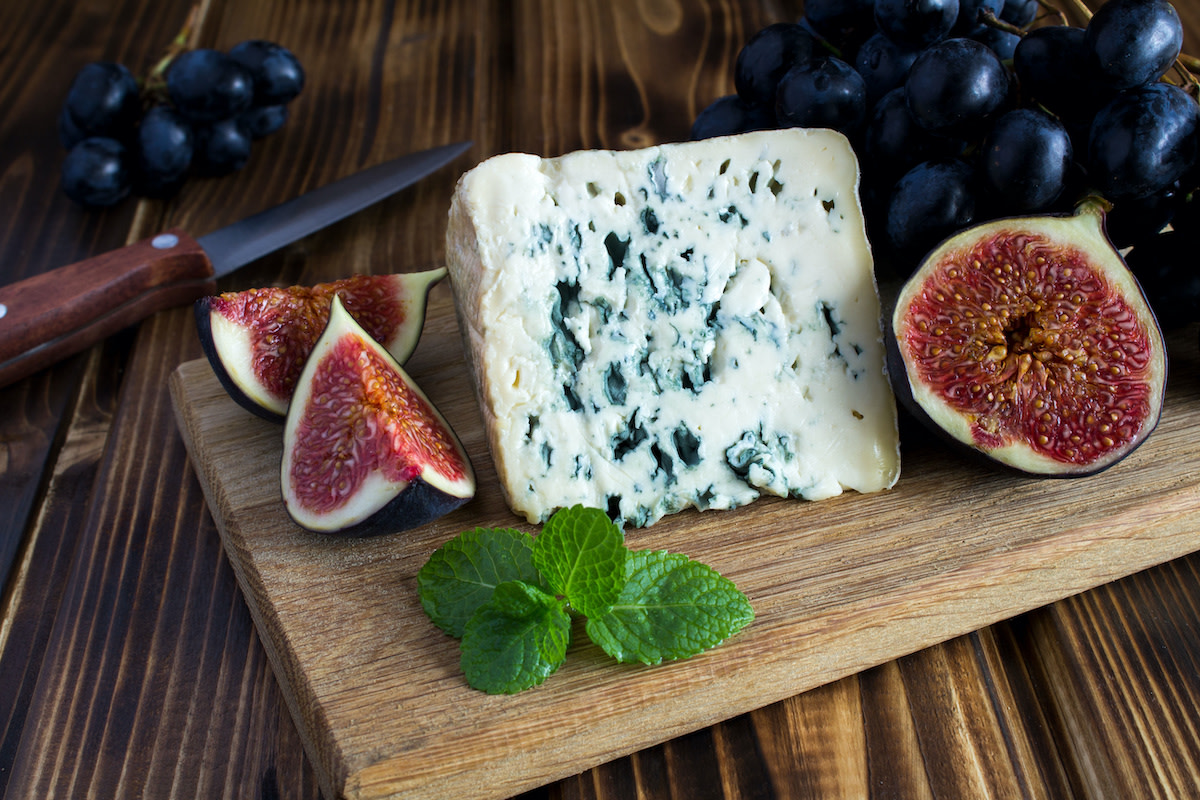Guide to Blue Cheese: 6 Types of Blue Cheese
Written by MasterClass
Last updated: Jun 7, 2021 • 2 min read
Blue cheese is a semi-soft, creamy, and pungent cheese known for its blue-green veins.
Learn From the Best
What Is Blue Cheese?
Blue cheese—or bleu cheese—is a type of cheese cultured with a mold of the genus Penicillium. The mold spores give the cheese its signature blue-green markings, also called blue mold. Though some strains of penicillium can be harmful if consumed, such as Penicillium expansum, the strains used to create blue cheese, Penicillium roqueforti and Penicillium glaucum, are safe to eat.
What Does Blue Cheese Taste Like?
Blue cheese is pungent with a distinctive salty and sharp flavor, though it can sometimes be sweet. It is semi-soft, crumbly, and creamy in texture. It pairs well with fruits and nuts, and it can be turned into sauces or salad dressing—blue cheese dressing is a popular dip for vegetables.
How Is Bleu Cheese Made?
Blue cheese is made around the world, and the results differ based on the type of milk, the diet of the animal, and cheesemaking techniques. In general, the process for making blue cheese follows these steps:
- Pasteurize raw milk: Blue cheese is made by adding a starter culture to pasteurized raw milk to turn the lactose into lactic acid, which solidifies the liquid milk.
- Coagulate the milk: Rennet, an enzyme produced in the stomach of mammals, is added to help coagulate the milk.
- Cut the curds: The coagulated cheese curds are then cut, which releases the whey—the liquid cheese byproduct.
- Drain the whey: After the curds have been drained of the whey, the curds are formed into individual wheels or blocks.
- Add the mold: The penicillium is then sprinkled over the cheese curds.
- Circulate oxygen: The cheese is poked with steel rods so that oxygen circulates in the cheese, which allows the mold to grow and gives the cheese its blue or green veins. Salt is also added to prevent spoilage.
- Age the cheese: The bleu cheese then ages for 60 to 90 days.
6 Types of Blue Cheese
There are many different types of cheese in the blue cheese family. Below are some common favorites.
- 1. Roquefort: Roquefort, one of the first blue cheeses, is made from ewe’s milk and has the strongest smell and flavor of all the blue cheeses. Roquefort cheese is named after the French village Roquefort-sur-Soulzon, where it is produced.
- 2. Gorgonzola: This cheese is made from cow’s milk and is named after the Italian town where it originated.
- 3. Blue Stilton: This cow's milk cheese is produced in England. The same region also makes a white Stilton cheese, which isn’t aged with mold.
- 4. Cabrales: This cheese is made from cow's milk in Asturias, Spain.
- 5. Danablu: This Danish blue cheese is made from cow's milk and has a milder flavor compared to the sharpness of other blue cheeses.
- 6. Cambozola: This blue cheese is known as a double-cream blue cheese because it is made from both cow's milk and cream. It also has a bloomy, edible rind that looks similar to Brie cheese.
Blue Cheese vs. Roquefort: What’s the Difference?
Roquefort is a type of blue cheese. Roquefort is a protected European Union designation of origin, meaning only blue cheese produced in the caves of Roquefort-sur-Soulzon can be legally called Roquefort cheese. Other cheeses also have similar protected designations, such as Cabrales, Stilton, and Gorgonzola cheese.
Want to Learn More About Cooking?
Become a better chef with the MasterClass Annual Membership. Gain access to exclusive video lessons taught by the world’s best, including Alice Waters, Gabriela Cámara, Niki Nakayama, Chef Thomas Keller, Gordon Ramsay, Yotam Ottolenghi, Dominique Ansel, and more.
